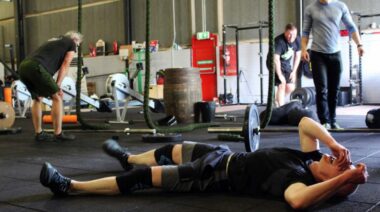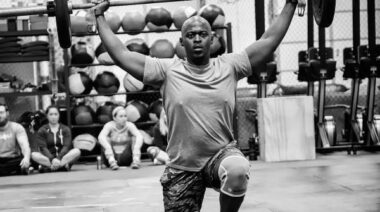One of the latest fads to hit Japan is the tidying craze, thanks in large part to best-selling author Marie Kondo’s 2011 book, The Life-Changing Magic of Tidying Up. The book detailed the ‘KonMari’ method for getting organized. Now published in English, the book has sold more than two million copies, taking the Japanese craze global.
In the book, Kondo says, “When you put your house in order, you put your affairs and your past in order, too.” Living in a clean space allows you to feel more at ease, less stressed, and more free to move effortlessly. As I read, I couldn’t help notice the correlations between tidying up the space and tidying up the body you live in by solidifying your commitment to fitness. If we apply the principles of the KonMari method to staying fit, we come up with the following essential elements.
Visualize Your Destination
Before getting started tidying up, Kondo says to visualize what it looks and feels like to live in a clutter-free space. Similarly, visualizing your end goals in fitness can help you stay the course.
Visualization in fitness tends to be fairly straightforward. For instance, a leaner or more defined body, crossing the finish line in an upcoming race, or a personal best in weightlifting. But far more important than the picture of what your goal looks like is the why behind it. A photo on the fridge or taped to the mirror might serve as initial inspiration, but pictures and events are simply temporary images and moments. Rather than defining what your goal looks like, the trick to staying motivated is getting down to what it feels like to live at your goal. That emotional construct drives your actions.
Your goals are important, but the reason behind them has far more permanence. [Photo courtesy Crossfit Impulse]
Start by Discarding
The first action in Kondo’s process for getting tidy isn’t cleaning or organizing, but getting rid of what no longer serves you. States Kondo, “To truly cherish the things that are important, you must discard those that have outlived their purpose.” The process begins with examining the various objects in your life.
So it is with getting and staying fit. Habits, substances, and relationships have dramatic impacts on all of us and our bodies. For example, success with quitting smoking isn’t about replacing it with chewing gum or another habit, but rather the willingness to establish that it doesn’t serve you. When an emotional tie to letting go of something outweighs the emotional tie to momentary comfort or pleasure an object brings, real and lasting change will occur. With fitness and wellness, success will have as much to do with what you get rid of as it will making more time for the treadmill or the weight room. As Kondo says, “Letting go is even more important than adding.”
Ask Yourself the Joy Question
Keep only what sparks joy in your life. In discarding what doesn’t serve you, Kondo recommends holding each object in your hand to intuitively feel whether that object provides happiness in your life. We should trust that same intuition with exercise and wellness.
A good litmus test with fitness is the feeling of butterflies or goosebumps. If you feel that excitement that lives somewhere between being nervous and thrilled, then you’re probably in the neighborhood of joy. Walking in to the boxing gym gives me butterflies. Snowboarding in deep powder gives me goosebumps. Find those active, cornerstone foundations in fitness that make the reps, sets, and miles worth it. Fitness otherwise can feel like ‘clutter’ and a means to an end, which is often short-lived.
One caveat: joy is not necessarily synonymous with pleasure or fun. If you’re looking for an example of joy, watch an athlete score the winning goal or a fighter who has just won his or her fight. That unmistakable joy is also the culmination of work, sweat, and passion – not simply fun or pleasure.
Ditch the Chore List
Two of life’s hated chores may very well be cleaning up and working out. But exercise need not be a chore, the same way that picking up doesn’t have to be hours upon hours of grueling work each day. Instead, see daily exercise as maintenance, in the same way that straightening up around the house every day allows you to keep your space in order. Complement that daily work with a special exercise event, such as a competition, weekly walk in nature, or league game.
Looking forward to exercise is an important component of sticking with it, in the same sense that making a ritual and special event of deep cleaning is an effective way to keep neat and tidy. For example, exercise is much easier to buy into if you’re an avid and passionate skier and your fitness helps you perform that passion at your highest level. Fitness becomes fun when it helps you win the race, climb the mountain, or dance all night.
Tidy Up By Category, Not Location
According to the KonMari method, tidying by location is a fatal mistake. For instance, you might have papers in several areas of your home. The key is to clean and sort by category (papers, books, clothing, etc).
In fitness and goal setting, people make a parallel mistake. Take New Year’s resolutions as an example. Such resolutions are often code for ‘losing twenty pounds.’ Instead of such a wide fitness goal, try working by category. For instance, improving cardiovascular fitness by taking your running pace from a ten-minute mile to a nine-minute mile. As it relates to weight loss, an example might be, cutting down added sugars in your diet from 40 grams a day to 20. Hone in on a specific category for your goals.
Listen to Your Internal Dialogue
Tidying up and exercise are both a dialogue with yourself. Marie Kondo likens tidying up your space to a meditative state where you quietly commune with yourself through the medium of the objects you possess. With exercise, perhaps the most important facet is that internal dialogue you establish while moving your body.
In order to listen to your breath and move with grace and intensity, you need the ability to still your mind. Many people distract themselves from the work of exercise with loud noise, music, and media. But ironically, ‘fun’ distractions can make the joy in exercise more difficult to attain.
As Kondo states, “noise makes it harder to hear the internal dialogue between the owner and his or her belongings.” In the case of exercise, your belonging is your body. Listening to that body means the difference between injury and health, as well as winning and losing.
If your training isn’t bringing you joy, you’re doing it wrong:






